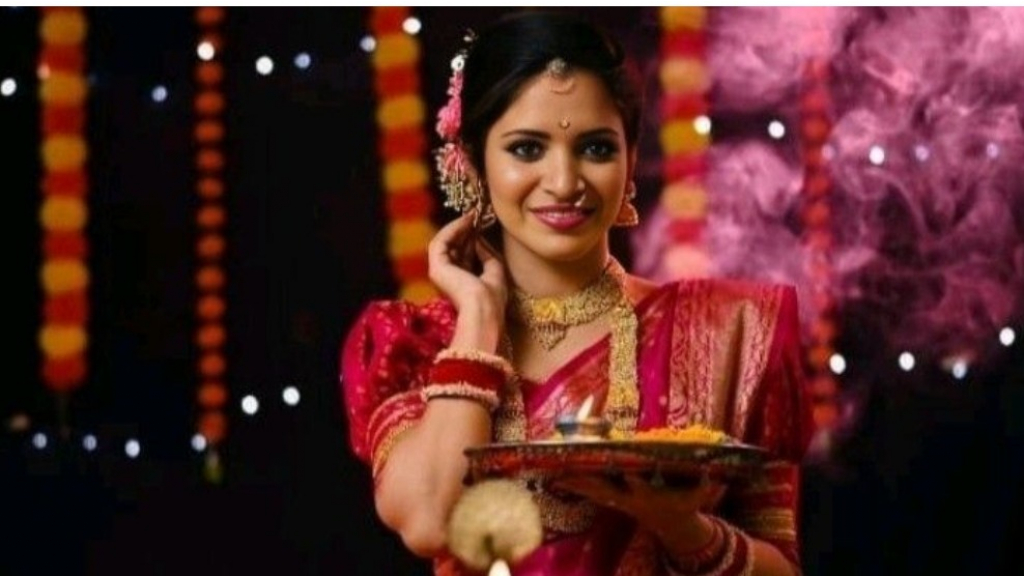Maharashtrian women’s fashion is a stunning blend of culture, history, and regal charm, with deep-rooted traditions that have been passed down through generations. A significant part of this legacy can be traced back to the Peshwa era, where royal influences shaped not only the social and political landscape of Maharashtra but also the fashion choices of its women. The Peshwai period, which lasted from the 18th century to the early 19th century, introduced distinct styles that continue to inspire Maharashtrian fashion today. From intricately designed sarees to opulent jewelry and hairstyles, the royal influence of the Peshwas has left an indelible mark on Maharashtrian women’s fashion, creating an aura of elegance and grace.
The Peshwa Legacy and Its Influence on Fashion
The Peshwa dynasty, led by influential figures like Baji Rao I and Madhavrao I, brought about a golden age in Maharashtra, both in terms of political dominance and cultural richness. During their reign, the Peshwas were known for their patronage of the arts, culture, and crafts. The royal court was a melting pot of traditions, where artists, musicians, and craftsmen thrived, contributing to the development of various styles that later became emblematic of Maharashtrian culture.
In terms of fashion, the Peshwai era saw the introduction of opulent garments, intricate jewelry, and highly detailed embroidery, which became key elements in the attire of Maharashtrian women. These royal influences permeated through to everyday life, creating a distinctive style that combined sophistication with traditional values. Over time, the influence of Peshwai fashion began to shape the distinctive way Maharashtrian women dressed, with a blend of cultural and regal elements that are still celebrated today.
Peshwai Sarees: Royalty Woven in Silk and Cotton
One of the most significant legacies of the Peshwa era in Maharashtrian fashion is the saree style. The Peshwai saree, known for its grandeur and regal appeal, became synonymous with aristocratic women of the time. These sarees were often made of silk or finely woven cotton, materials that exuded elegance while remaining practical for everyday wear. The sarees were characterized by their bold borders, often featuring intricate zari (gold or silver thread) work and symbolic motifs.
During the Peshwa era, women wore sarees with rich, contrasting borders, creating a visually striking look. The saree draping style also underwent a transformation under Peshwai influence, with a more structured, elegant drape that highlighted the beauty of the fabric. Additionally, the sarees were paired with blouses or cholis that were tailored to perfection, often featuring intricate embroidery or decorative elements that reflected the sophistication of the time.
The Peshwai Nose Ring: The Symbol of Marital Status and Royalty
Another piece of jewelry that became iconic during the Peshwai era is the Nath (nose ring), an essential part of a Maharashtrian woman’s bridal attire. The Nath is more than just a piece of jewelry; it symbolizes a woman’s marital status and is a mark of her femininity and beauty. The Peshwa queens and women of the court wore large, ornate Naths, often adorned with diamonds, emeralds, or pearls. The Nath's grandeur was matched by its cultural significance, marking it as an important part of the Peshwai bridal look.
While the larger, more extravagant Naths were worn by royals, the tradition of wearing Naths continued for women of all social standings. Over time, this royal influence was incorporated into daily fashion, with the Nath becoming an essential piece of jewelry worn by women during festivals, weddings, and other significant events.
Peshwai Jewelry: A Blend of Luxury and Tradition
Peshwai jewelry was not just a symbol of wealth and power—it also reflected the royal taste for opulence and craftsmanship. Women in the Peshwa court wore pieces that were intricately designed, often crafted from gold and precious stones. The jewelry included elaborate necklaces, chokers, bangles, and earrings that were adorned with diamonds, rubies, and pearls.
The Kolhapuri Saaj, a traditional neckpiece, gained popularity during the Peshwai era and became a key element in bridal attire. This gold necklace, often decorated with peacock motifs, is still a part of many Maharashtrian weddings today. The Peshwa influence also extended to earrings, which were often large and designed to match the grandeur of the Nath, creating a balanced and regal look.
In addition to bridal jewelry, women of the Peshwa court wore anklets, bajubands (armbands), and haars (long necklaces), all of which contributed to a complete royal ensemble. These pieces not only added an air of elegance but also showcased the wealth and artistic sensibilities of the Peshwa dynasty.
Hairstyles and Draping Styles: Grace and Refinement
The Peshwai influence on women’s fashion extended beyond clothing and jewelry. The hairstyle was an essential part of a woman’s overall look, and during the Peshwa period, women often styled their hair in elaborate buns, adorned with flowers, jewelry, or even intricate braids. The Maharashtrian bun, also known as the "juda," became a symbol of grace and elegance, often embellished with gold and gemstone hairpins.
When it came to draping, the Peshwa period saw the rise of the traditional nauvari saree (nine-yard saree). This drape was not only a mark of sophistication but also a reflection of the regal tradition of the Peshwa queens. The nauvari saree was draped in a way that allowed the woman to move gracefully while maintaining a structured, royal look. The style of wearing the saree was often paired with tight-fitting cholis, completing the elegant and dignified appearance.
Peshwai Influence on Modern Maharashtrian Fashion
The royal influence of the Peshwa era is still alive today in the fashion choices of Maharashtrian women. Modern bridal collections often draw inspiration from Peshwai styles, incorporating Paithani sarees, Kolhapuri Saaj necklaces, and Naths into contemporary designs. Additionally, Maharashtrian women continue to embrace the nauvari saree for traditional events and cultural celebrations, keeping the regal elegance of the Peshwa era alive.
Fashion designers have also reimagined Peshwai influences by blending royal elements with modern trends. The nauvari saree has been reinvented with lighter fabrics, while Peshwai jewelry has been updated with contemporary designs that cater to the modern woman. The enduring appeal of Peshwai fashion lies in its ability to merge tradition with modernity, offering a perfect blend of cultural heritage and contemporary style.
Conclusion: The Enduring Legacy of Peshwai Elegance
The Peshwai era has left an indelible mark on Maharashtrian women’s fashion, influencing everything from saree draping styles to jewelry and hairstyles. The elegance and sophistication associated with Peshwai fashion continue to resonate in modern Maharashtrian attire, making it a timeless symbol of grace and royal heritage. As Maharashtrian women continue to embrace Peshwai influences, they honor the legacy of the Peshwa rulers and the rich cultural heritage of Maharashtra, ensuring that the regal beauty of this period lives on for generations to come.
Image Credits: Pinterest .The Images in the blog are for representational purpose only.




Share this via
Or copy link